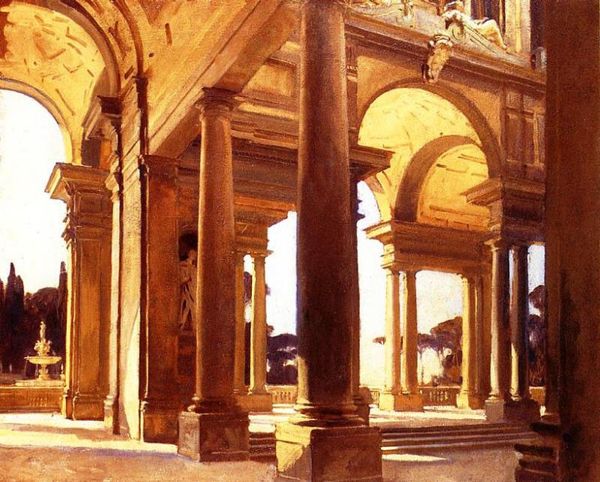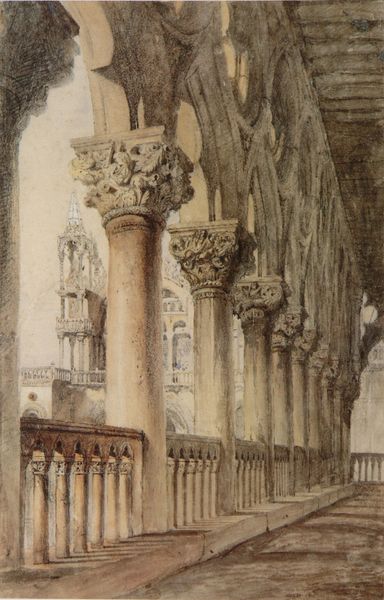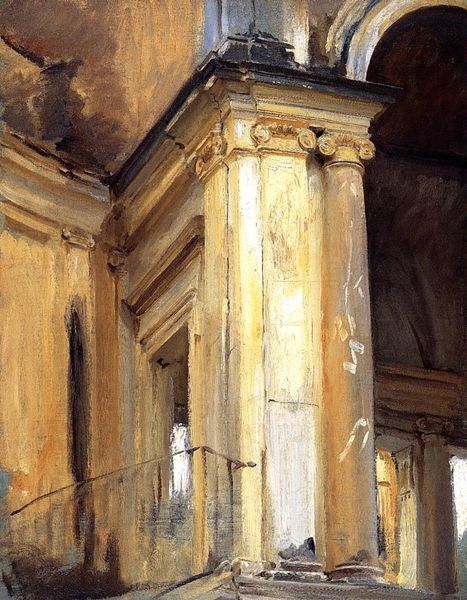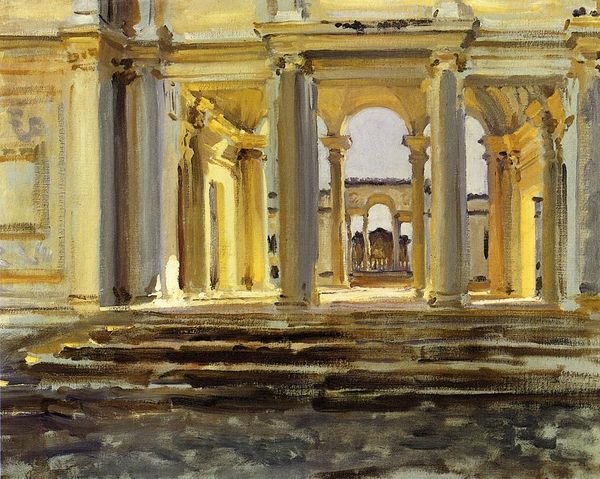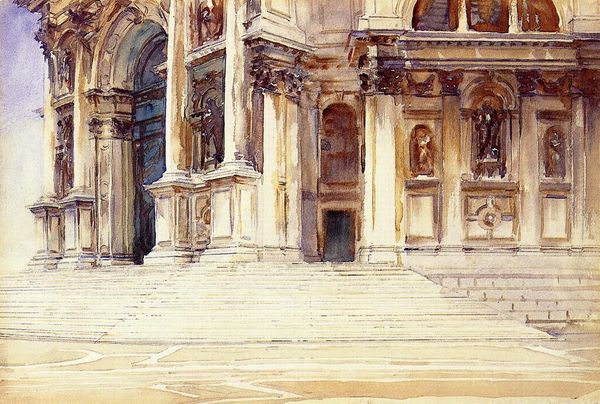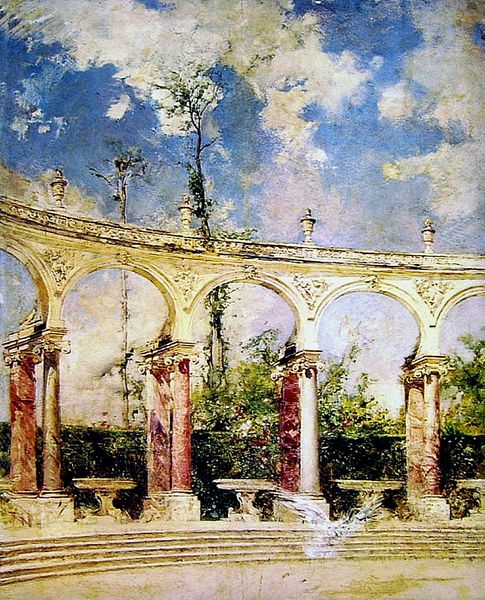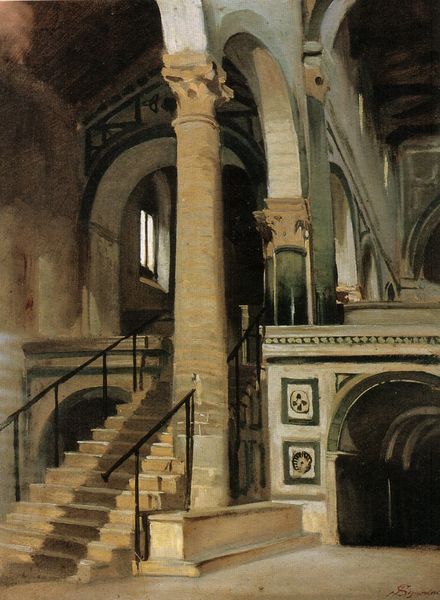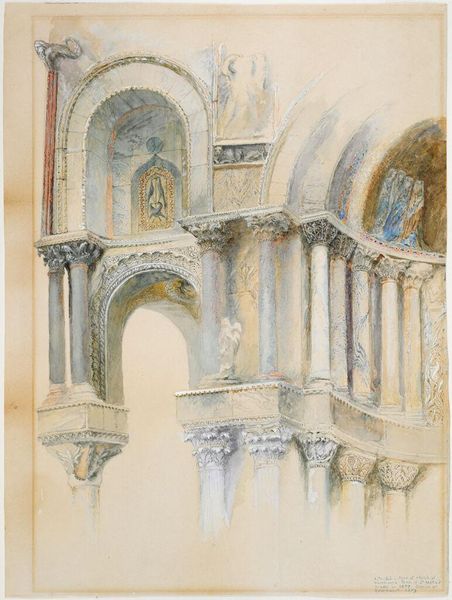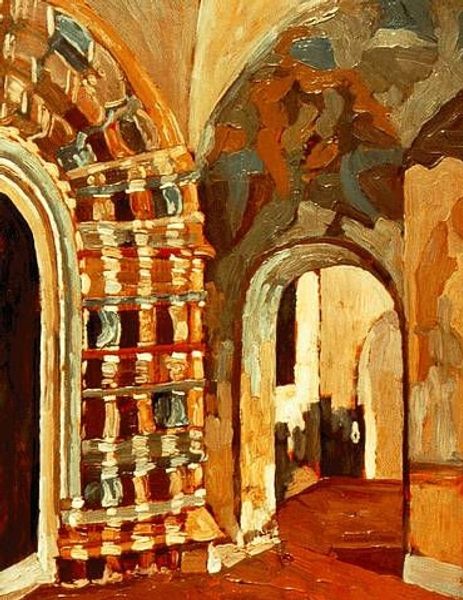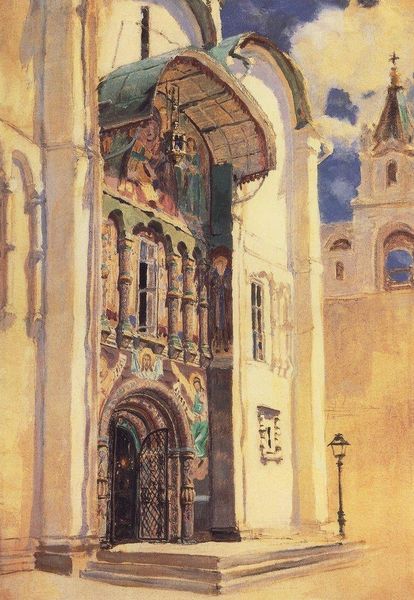
Dimensions: 53.02 x 40.48 cm
Copyright: Public domain
Curator: Looking at "Genoa, the University" painted by John Singer Sargent in 1911, I’m struck by the way the light bounces and dances through this watercolor, capturing a silent, almost melancholic atmosphere. What’s your take on it? Editor: It's compelling. The oppressive arches seem to symbolize the weight of history and tradition on intellectual pursuit. The watercolor is evocative of that cloistered atmosphere, yet, it almost romanticizes what may very well be the space where revolutionary thoughts incubate. Curator: Absolutely. I feel it also showcases Sargent's brilliant ability to marry precision with fluidity. Look at how he renders those grand classical columns, so structurally sound, yet bathed in such ephemeral light and shadow. The composition guides our eye through the corridor, inviting introspection. Editor: Precisely. It draws attention to the institutional power. The University itself as a character within the landscape of early 20th-century European intellectualism, when educational institutions played a significant role in shaping political and social landscapes. Sargent, seemingly without any people in sight, emphasizes structure over content. Curator: That's a compelling way to see it. And to consider this as a "portrait" of a space, rather than a person, offers a very modern twist. It's as though Sargent is suggesting that buildings, too, carry histories and emotions within them, and these shapes resonate within us. Do you see the brushstrokes though, how freely and loosely he’s rendered them, like secrets barely whispered? Editor: Absolutely, as secrets that, when whispered into society at large, are meant to reshape cultural perceptions. Curator: Yes, exactly. I think Sargent understood this tension instinctively and this piece encapsulates it perfectly, as an institution but more accurately as an environment ready for radical transformation. Editor: A transformation indeed. I find myself leaving with questions about progress, what propels social advancement forward, but more importantly who it benefits, because universities in particular, although progressive and liberal environments in some respect, do create class disparity that further entrenches existing institutions.
Comments
No comments
Be the first to comment and join the conversation on the ultimate creative platform.
